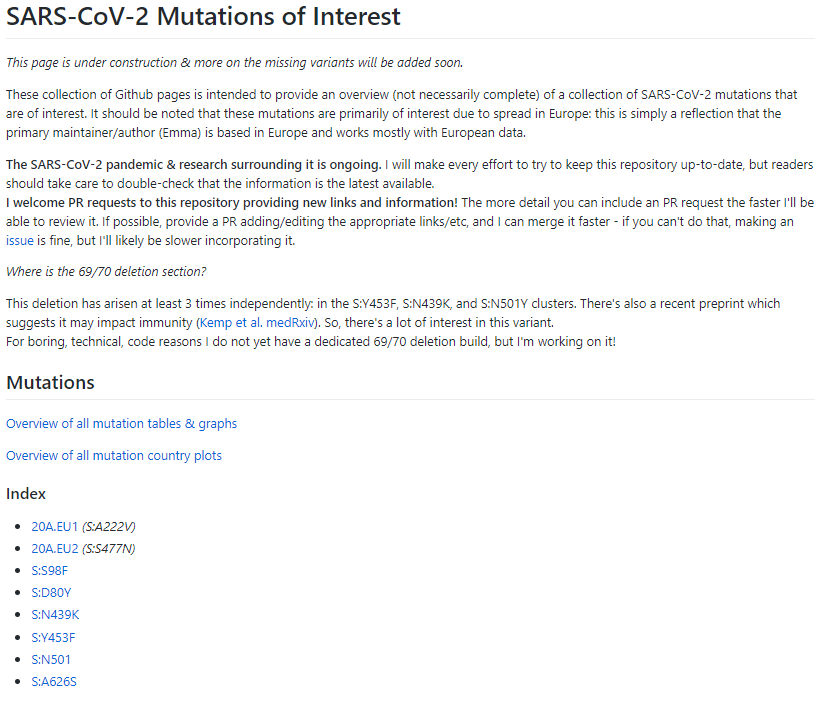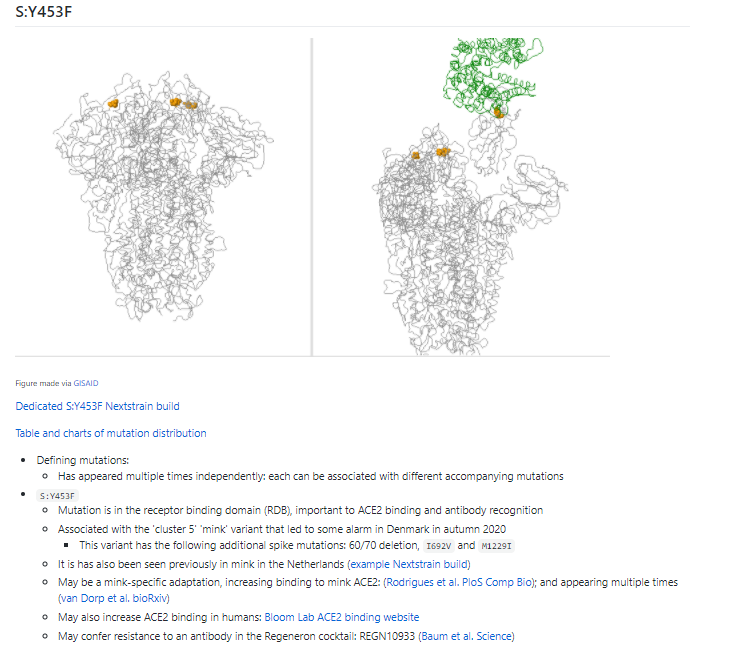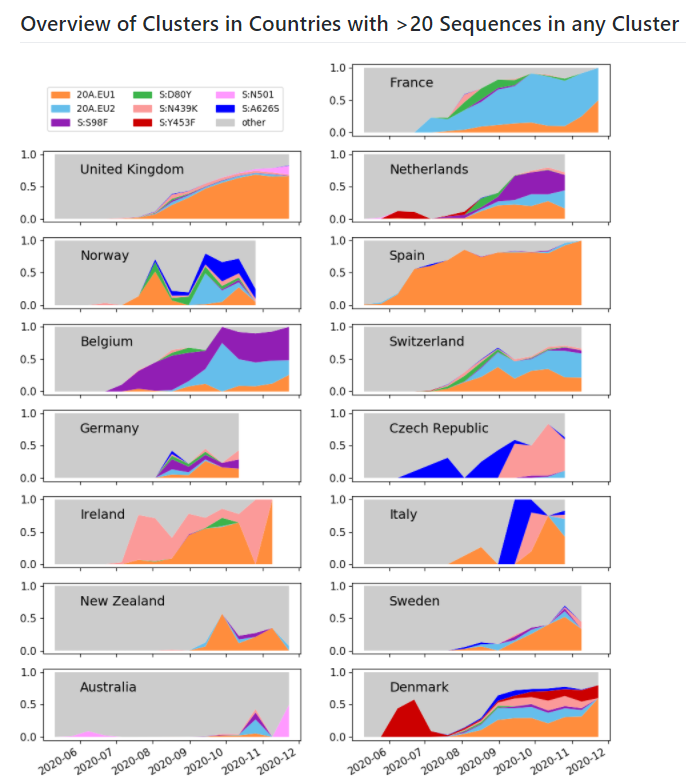
Large blue circles below are samples that carry S:N501Y, but unlike the new variant in England, do not have the 69/70 deletion (that's in the green ones). These samples are primarily from Wales. @CovidGenomicsUK may have more information here!
21/N
21/N

Zooming in on the tree a bit, a small cluster in yellow carries a different mutation at the same position: S:N501T.
These are relatively recent samples, mostly from the North/North Eastern USA & eastern Canada (yellow on map).
22/N
These are relatively recent samples, mostly from the North/North Eastern USA & eastern Canada (yellow on map).
22/N

Important to remember: these clusters I highlight above are separate from the 'new' UK one. However, they can give us information about mutations at the S:N501 position!
And they highlight the importance of sequence sharing: the only way to see these connections! 🤝
23/N
And they highlight the importance of sequence sharing: the only way to see these connections! 🤝
23/N
I'll try to update the S:N501 build with the latest sequences later today or tomorrow. I'll post again here when I do.
24/N
24/N
The latest data available from @CovidGenomicsUK (uploaded to GISAID yesterday) have been incorporated into our S:N501Y build. This added about 50 sequences to the 'new UK variant' (501Y + 69/70 del - green, at top).
25/N
nextstrain.org/groups/neherla…
25/N
nextstrain.org/groups/neherla…

On the variant monitoring site, you can see the proportion of sequences from the UK that come from each tracked variant. S:N501 are in hot pink.
26/N
github.com/emmahodcroft/c…
26/N
github.com/emmahodcroft/c…

Some have asked whether the S:N501Y + 69/70 del (the 'new variant') is found in other places in the UK. We can look at this by colouring & plotting the map by 'division'
It seems to be mostly in England - also Scotland & Wales (not N Ireland)
27/N
nextstrain.org/groups/neherla…
It seems to be mostly in England - also Scotland & Wales (not N Ireland)
27/N
nextstrain.org/groups/neherla…

• • •
Missing some Tweet in this thread? You can try to
force a refresh














